High heels—really?
How could high heels help my kindergartners learn?
Quiet Brooke knew her love for shoes would change us all. Because her mom strongly supported her, they found facts galore. Brooke used her knowledge of letters and sounds to write these facts in her own way on her display board.
- Did you know men were the first heel wearers?
- High heels were made of a variety of materials.
- Shoe-makers use a system of sizes, widths, lengths and definitely heights.
Brooke’s compelling closure was showcasing several pairs of heels before demonstrating the proper way to walk.
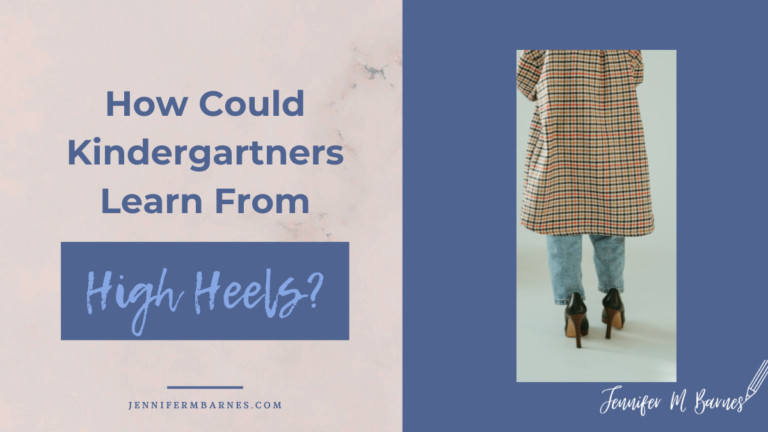
The Big Day
One of my all-time favorite memories came several weeks later at our school-wide Learning Celebration. My students planned to highlight their passion projects in front of the whole school. Back then, we were a school of portables around a large outside gathering arena, flanked by trees. There, all the grades sat on benches overlooking our wooden stage.
Picture Brooke, auburn ringlets of hair, clonking up to the microphone. As with each kindergartner, the audience of first through fifth graders, teachers, assorted parents, and visitors leaned forward, smiling with anticipation to hear yet another kindergartner’s passion.
Brooke leaned into the microphone to talk about the first high heel wearers (as a historian), the variety of materials (as a scientist), and the sizes (as a mathematician.)
“And now, I’m gowing to demonstwate the pwoper way of walking in high heels…” Brooke looked into her audience and smiled. She twirled her full skirt as she turned towards me. During her third step, that beloved shoe hit a bowed board the wrong way and sent her tumbling. The crowd gasped audibly.
I jerked forward and made the best catch of my life. I grabbed that flying five-year-old in my arms, as delicately and poised as I could manage. While we squealed, laughed, and hugged, there wasn’t a dry eye in the place.
Our district superintendent, wiping away a tear himself, remarked later about our school being a unique place where all learned while using everything. Pretty significant compliment! Not only had we all learned a bit about the history of shoes, but we witnessed a shy child transform. She became a huge risk-taker and ended up becoming a champion of our Learning Celebration.
Can kids learn using … anything?
Really? When you ask little kids about their passions, you might be surprised. Sure, the usuals are there—ballet, soccer, and drawing.
Dig deeper.
As responsive teachers, we help open possibilities in front of our kids. And we just never know where our curriculum may be headed next…
- Snow globes and cleaning products
- Chipotle restaurants and movie theaters
- How to make blueberry muffins or how to take care of a baby brother
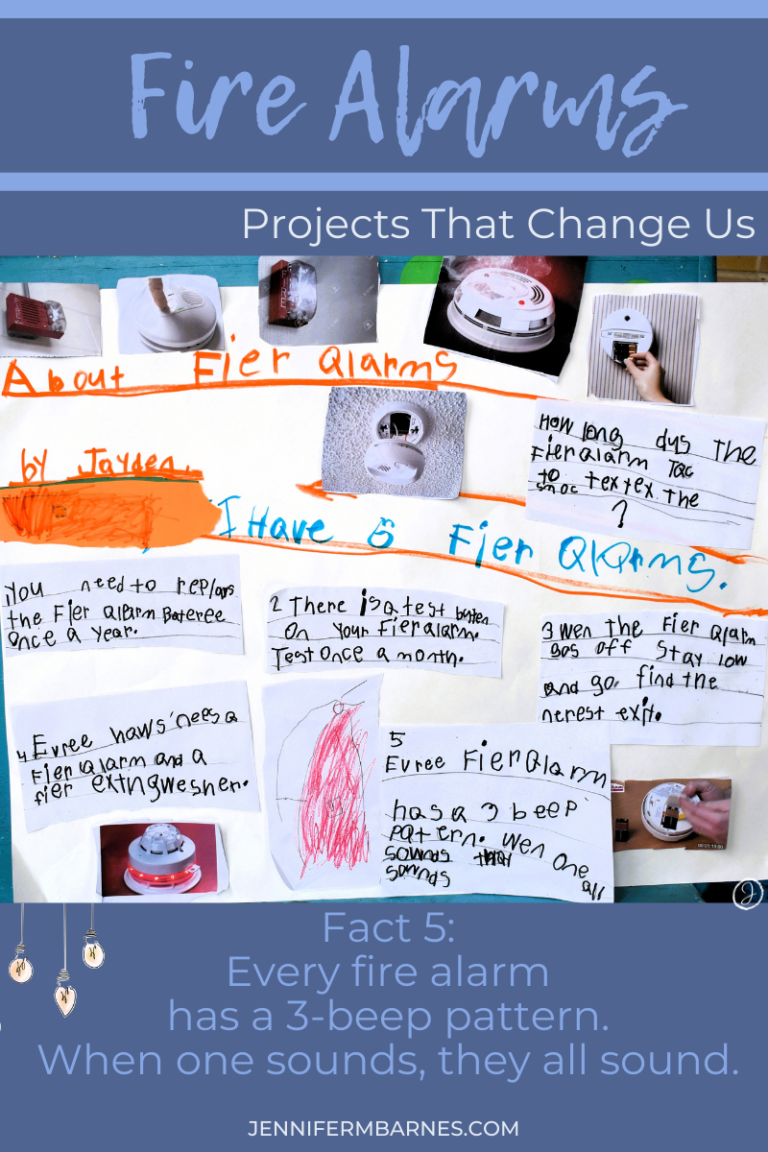
Things Children Learned Before Coming to Kindergarten
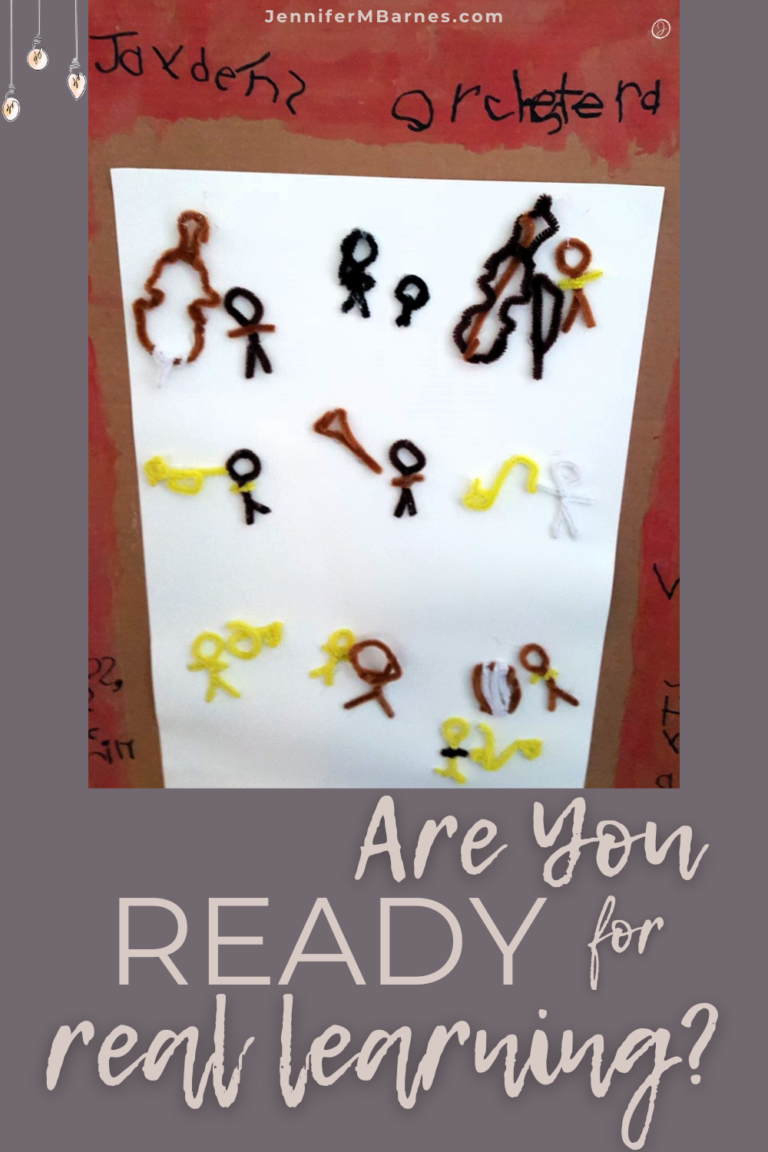
Little kids lead interesting lives. They come to school already knowing many—and varied—things. Some, academic. Others, more street-smart. Hopefully, they recognize things they adore. They’ve watched others excel in their passion. They’ve “read” books, looked at pictures, and talked about it. They’ve seen things at stores or museums or even on YouTube.
When little ones cross the threshold of home to school, we continually praise:
- “Look what you can do already!”
- “You’re always here at the Atelier trying out all the different art supplies, aren’t you?”
- “Your Share today on ‘Ways to Host a Birthday Party’ made us all really think!”
- “Thank you for teaching us all about this passion of yours.”
(If they don’t have any passions yet, this perspective gently nudges them to consider developing things in which they care and become invested.)
Once They Come to Kindergarten...
- Those passions guide us as teachers. Once we know interests and passions of children, our minds whirl through our book collections, possibilities for dramatic play and Explorations (our version of “centers”), potential class speakers or field studies, and more.
- They enlighten and inspire conversations and share sessions. (Our version of “show-and-tell.”) Once kids realized each other’s interests, their lunch conversations, Writing Workshop pieces, and recess play were more thoughtful, educational, and impactful. Imagine how their knowledge of car models and national parks impacted our recess time and imaginative play.
- Their passions connect strangers and create friends. Upon arriving each morning, Eli headed straight to the Gears area to create a different edger or trimmer. After constructing his tool, he’d “trim” around the edge of our large carpet. He knew the name brands and which trimmer would do which lawn job best. He knew way more about edgers and trimmers than I ever dreamed!
This perspective in teaching pushes us to help kids discover their passions. Sometimes it’s noticing what they love and simply naming it for them.

Different Philosophies of Teaching and Learning
Often little kids (and family members) believe they show up as empty vessels, waiting to be filled. I believe though that children come to school with gifts and talents already in their lives—things they can teach others.
One of our challenges as teachers and parents is to observe children closely, jot down notes, see which materials they prefer using most, or what areas of the room seem to inspire them. (At my school, we called these notes “kidwatching notes.”) Then, reflect on the data:
- Which books are they drawn to? Large nonfiction? Field guides? How-to books? Funny picture books? Graphic novels or chapter books?
- What other mentor texts, research guides, or picture books could we provide that may be “just the thing” that enables this child to really move forward?
- Are they drawn to the Atelier (our art workshop) or the Storybook Garden? Do they make grand creations in our Construction Zone (block area) or the Class Library in the Animals tub?
In continually “naming” their inclinations, we elevate their interests and identify them as something important. We lift them from simply being another kid… to becoming an expert on something. Experts are those from whom everyone else (small or tall) can learn.
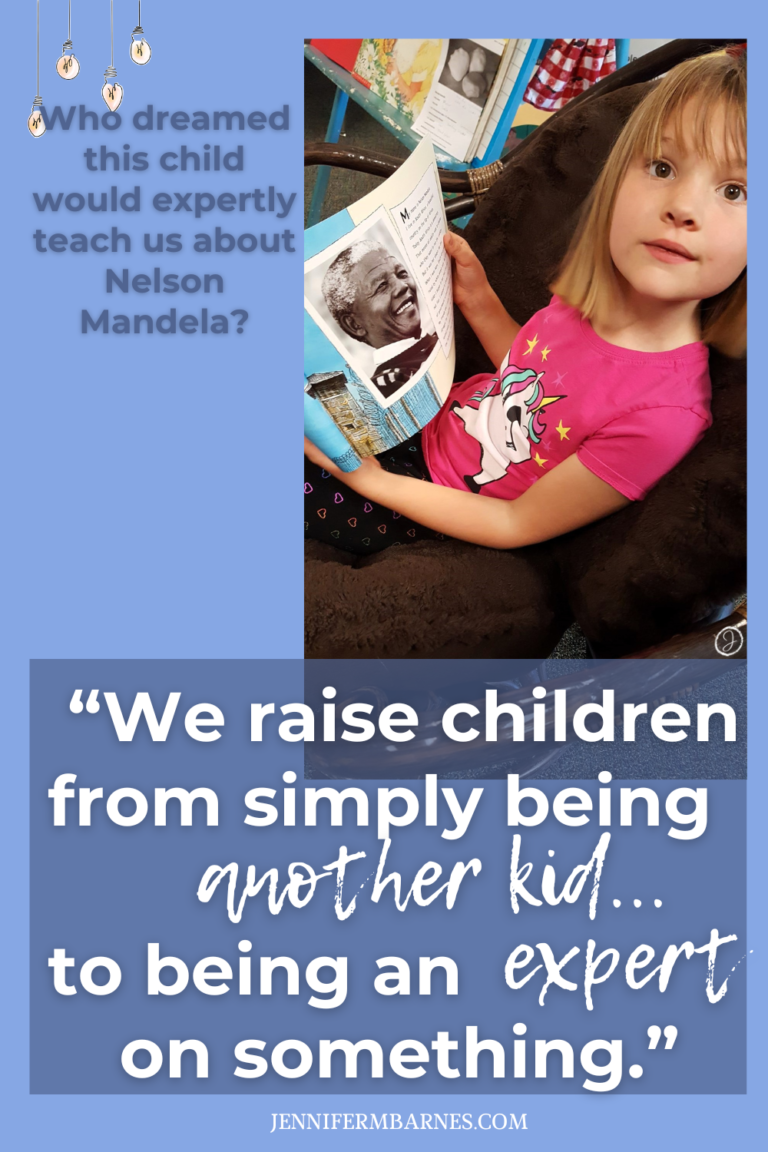
This way of teaching and being isn’t for the faint-hearted though!
It might sound sweet and fun. But it’s hard work. After all, interesting passions invite compelling questions. It requires that we take a critical stance, examining our materials and resources to ensure that we offer places of entry for all kids.
- While listening to an engaging read-aloud, inquisitive Emily piped up, “So when are we gonna get to the girls in this book of scientists, Mrs. Barnes?”
- Similarly, years ago, insightful Purushotham begged, “I want to read books about people like me—and please don’t say Gandhi. I already know about him. There’s gotta be more than Gandhi!”
Not just books about people and nations. (Clearly, those were incredibly important. And we set right out to investigate and find some… We found more than Madame Curie and Gandhi, but Emily and Purushotham weren’t completely happy. I am happy to confirm there are more books about women scientists and Indians today.)
Our Ever-changing Resources and Books
When Devin wanted to share his snow globe collection and Brooke’s heart beat at the thought of high heels, I had to creatively approach my classroom library to figure out how I could elevate their loves to new well-written books (if I could find them.) And, if we couldn’t find them, perhaps we could write them ourselves!
This notion of lifting up children for their interests and desires involves:
- Our classroom libraries
- Our rotating dramatic play areas
- Our exploration time manipulatives
What This Inquiry Learning Looks Like
But, real learning—inquiry learning—takes over even more, bringing a flood of home-made, paper props and child-created class books. Children even change their vocabulary and language. (Playing with beads as jewelers? Learning with seashells as oceanographers? Or even those basic questions five-year-olds learn in the first days of school, “What do you notice about that?” and “What do you wonder?”)
So, yes. We can learn from snow globes.
- As historians, we wonder who first created them.
- As mathematicians, we work with large collections of snow globes—counting the variety, shapes, and sizes.
- As scientists, we figure out the right solution for making them work without getting cloudy.
- As artists and makers, we create and design our own.
The Learning Goes On and On and On…
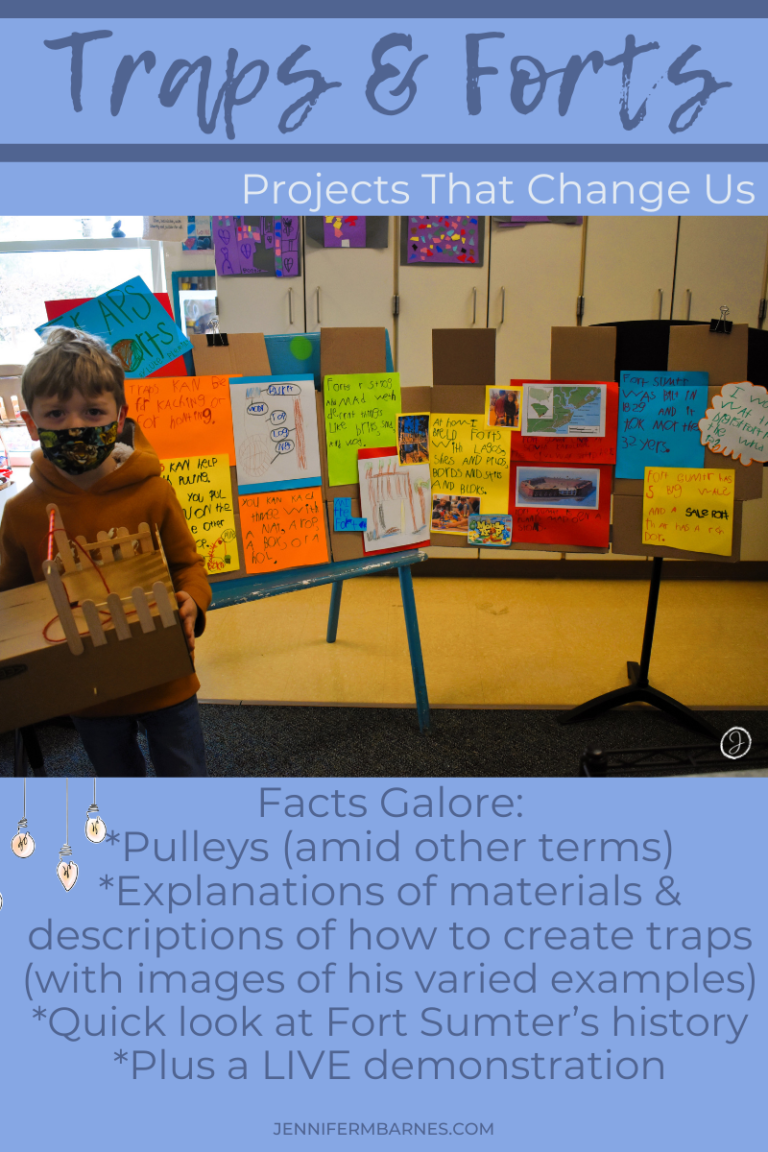
And then, we move on… to learning about how restauranteurs run their restaurants, the proper way of caring for babies, and how Monster Truck tires can be even taller than we are.
Yes, we truly all learn something from each child’s love
What were your little kids crazy about? How did that passion of theirs impact their learning—and maybe yours, too? Please share your story with us.

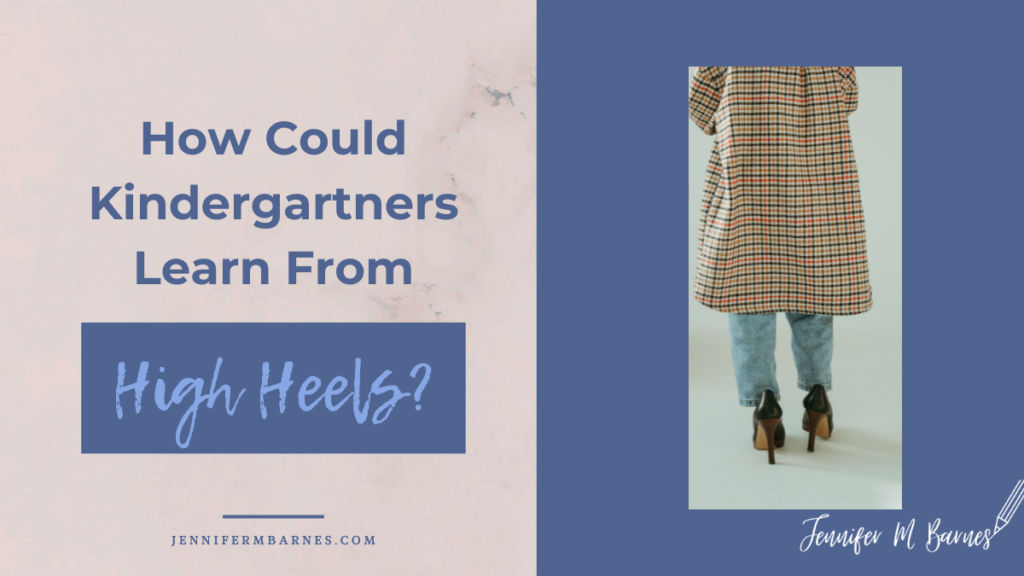
Pingback: The Eclipse & Everything Else: How to Learn About Anything - Jennifer M. Barnes